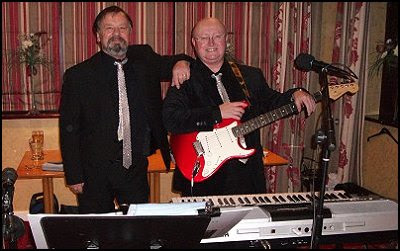Thursday 30 May 1998. Leaving Oxford behind, we drove on to Uffington, the site of our last white horse of the week and a place of considerable mystery.
The horse is thought to be the oldest of the white horses of England and is not a true representation, but rather a cartoon, loose formed, styled for speed and grace, picked out on the crest of the highest hill in the area as though galloping for the safety of the hill fort a few yards away.
We parked the car and started walking towards the horse, but meeting a white sheep first... As we approached the hill we could see... something...
There is a problem here. The horse is on the crest of the highest hill... There was someone else, a couple walking down from the horse.
"Where can you see it from?" the chap asked me in a puzzled voice. I pointed at the sky.
"Up there," I said. The only way you can see the entire drawing is from the air. From the ground you can only see bits of it.
This could explain why it looks so little like an actual horse of course... You have to wonder what contemporary opinion was at completion. Did the commissioning king or chieftain exclaim "Bloody Nora, what a pillock! How is anybody supposed to see it?!?" and have the unfortunate artist put to death on the spot? Or is it a horse at all?
Just below the horse is a smaller flat-topped hill with a large white spot in the middle of it. This, according to an ancient folklore, is where St George slew the dragon. It is said that the dragon's blood, being spilt here, inhibits the growth of grass, leaving the white spot forever to mark the place. Which is fine except that there are no records to show that St George ever came to Britain at all.
"Yuck!" his page said, "Britain? Why would you go there? Full of blue-painted twits and dragons all over the place! They'll take you for a dragon slayer!"
"They'll take me to their hearts or not at all..."
There is a school of thought that says the drawing is of the dragon, not a horse. Another that it is St George's steed.
We left the horse and turned to have a look at the near by hillfort. Turning away from Dragon Hill (that's really its name so someone believed in it!) we saw another natural feature. The Manger. Formed by melting ice as the ice age ended (always a good time for ice to melt...) it is the supernatural feeding place of the white horse which on moonlit nights (this is the legend you know, I'm not making it up!) canters or rolls down the hill (alright... I did make that bit about rolling up...) to feed. Three sets of brackets in a single sentence, by heck, that's not bad!
And here's Miss Franny trogging along the rampart wall of Uffington hillfort. It's quite a large hillfort and has been suggested for the site of King Arthur's Battle of Badon, mentioned in the Annals of Wales. It's in a strategic position as it protects the ancient trackway known as the Ridgeway. But there are so many contenders for Badon and it is unlikely we shall ever know.
So another school of thought is that the horse is that of King Arthur. The scouring of the white horse, to stop grass growing to obliterate it, was turned into a festival that occurred every seven years and included games such as wrestling and cheese rolling. Cheese rolling sounds a crazy sport doesn't it? You can't help wondering if it started by accident when some twit dropped his cheese and had to hare off down the hill after it and everyone laughed and rolled their own cheeses after him in an attempt to knock him down, thus inventing the game of skittles...
Where are we going next? Blimey, this holiday is almost done!
Return to Wiltshire, Cotswolds and Avon 1998 Index
 Garstang's Tithebarn was full to the rafters (I know because I could see them!) and they were well up for a night of music and laughter.
Garstang's Tithebarn was full to the rafters (I know because I could see them!) and they were well up for a night of music and laughter. 


















































